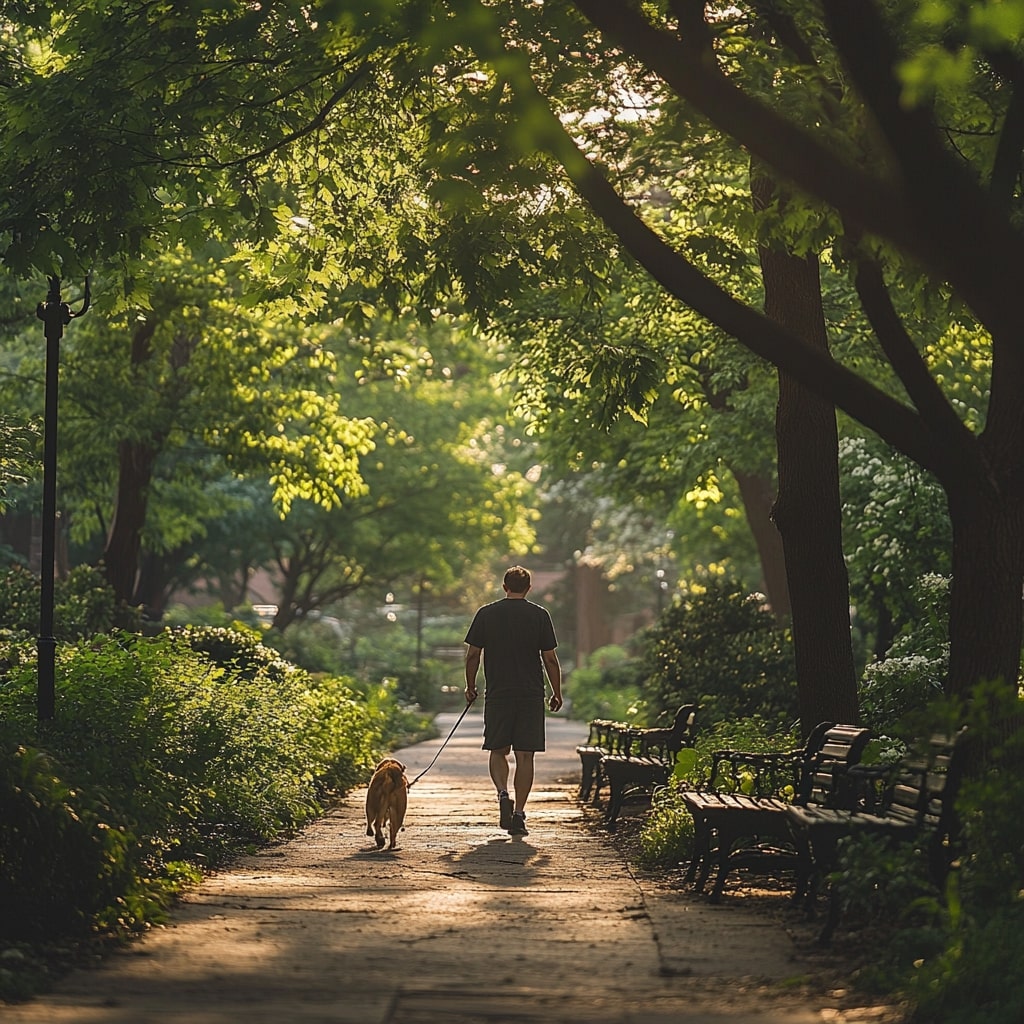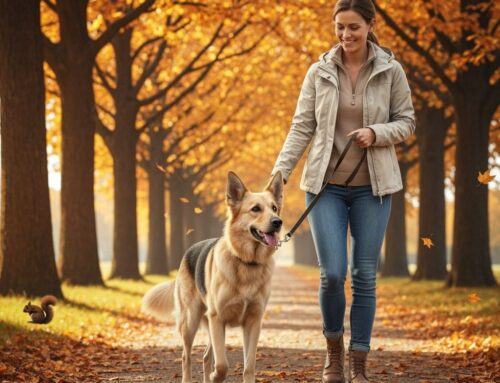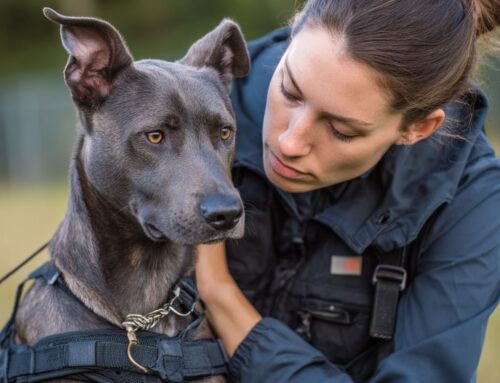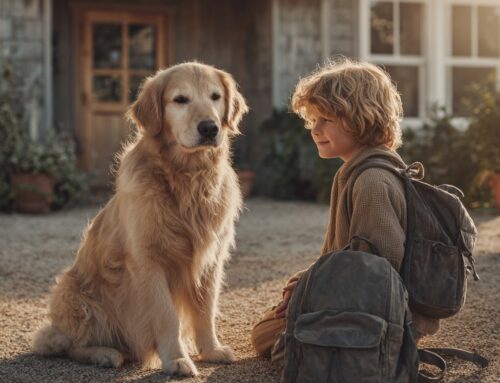Introducing a nervous dog to a leash requires patience and a gentle approach to ensure a positive experience for both you and your pet. Ensuring that the process is gradual and positive can make a world of difference in how your dog responds to this new aspect of their routine. We’ll get into some detailed tips and strategies to help make the leash introduction as smooth and stress-free as possible. These steps are designed to promote a calm and confident attitude in your dog towards leash walking.
Understanding Your Dog’s Anxiety
Before diving into the practical steps of leash training, it’s essential to understand the root of your dog’s nervousness. Each dog is unique, and a nervous or anxious dog can stem from past trauma, lack of socialization, stress or a naturally timid personality. Recognizing and acknowledging these factors can help tailor your approach to suit your dog’s unique needs. Catering your training to your dog’s personality and dog’s pace will help them feel more secure and confident as they learn to walk on a leash.
It’s important to be observant and adaptable throughout the training process and training sessions. Pay close attention to your dog’s body language and reactions to different situations, adjusting your leash train methods as needed. Some dogs may benefit from additional calming aids, such as anxiety wraps or calming sprays, while others might respond well to a specific type of treat or toy. The key is to remain flexible and responsive to your dog’s cues, ensuring that the training environment remains positive and supportive as you start leash training. This personalized approach will help your dog build trust and gradually overcome their leash anxiety. These next leash milestones are designed to set both you and your dog up for success.
Familiarization with the Leash
The first step in introducing a leash to a nervous dog is familiarization. Start by using the leash in your home to help your dog become familiar with it in a comfortable, non-threatening environment. Allow your dog to explore the leash on their own terms, rewarding them with treats and praise for positive interactions.
- Sniff and Investigate: Place the leash in your dog’s living area where they can easily approach it. Allow the fearful dog to sniff and investigate it at their own pace. The goal here is to make the leash a normal part of their environment. Repeating this several times can reinforce the sense of safety and normalcy.
- Positive Associations: Use treats and praise for a positive association whenever your dog shows interest in the leash. You can place treats near or on the leash to create positive associations. The more positive experiences your dog has with the leash, the less intimidating it will seem. Over time, your dog will begin to associate the leash with good things, reducing their anxiety.

Positive Reinforcement During the Leash Training Sessions
Positive reinforcement is a powerful tool in dog training, especially for nervous dogs. Rewarding desired behavior with treats, praise, or play can encourage your dog to repeat those behaviors.
- Treats and Praise: Each time your dog interacts with the leash or behaves calmly around it, reward them with a treat or verbal praise. This will reinforce the idea that the leash is a good thing and help diminish your dog’s fear of the leash. Consistent rewards can make your dog more eager to engage with the leash.
- Gradual Increase in Time: Gradually increase the amount of time the leash is present during these positive interactions. Start with a few minutes and slowly extend the duration as your dog becomes more comfortable. Patience is key; let your dog set the pace.
Short Leash Train Sessions
Starting with short, controlled sessions can help prevent overwhelming your dog. The goal is to build up their confidence gradually with proper training.
- Indoor Sessions: Begin by attaching the leash to your dog’s collar and letting them drag it around indoors under supervision. This allows your dog to get used to the sensation of the leash without the added stress of being outside. Supervised practice ensures safety and encourages familiarity.
- Supervised Exploration: Let your dog explore different rooms while dragging the leash. This helps them associate the leash with their safe, familiar environment. This low-pressure exploration can help reduce their anxiety about the leash and make sure everyone in the family is aware of your training and should all be on the same page when it comes to your training session.
Comfort First
Ensuring that your dog’s collar fits properly is crucial. A poorly fitting collar can cause discomfort and increase anxiety, making the training process more difficult.
- Proper Fit: Make sure the collar is snug but not too tight. You should be able to fit two fingers between the collar and your dog’s neck. Regularly check the fit as your dog may grow or change.
- Comfortable Materials: Choose a collar made from soft, comfortable materials that won’t irritate your dog’s skin. Comfort can make a big difference in how your dog perceives the leash.
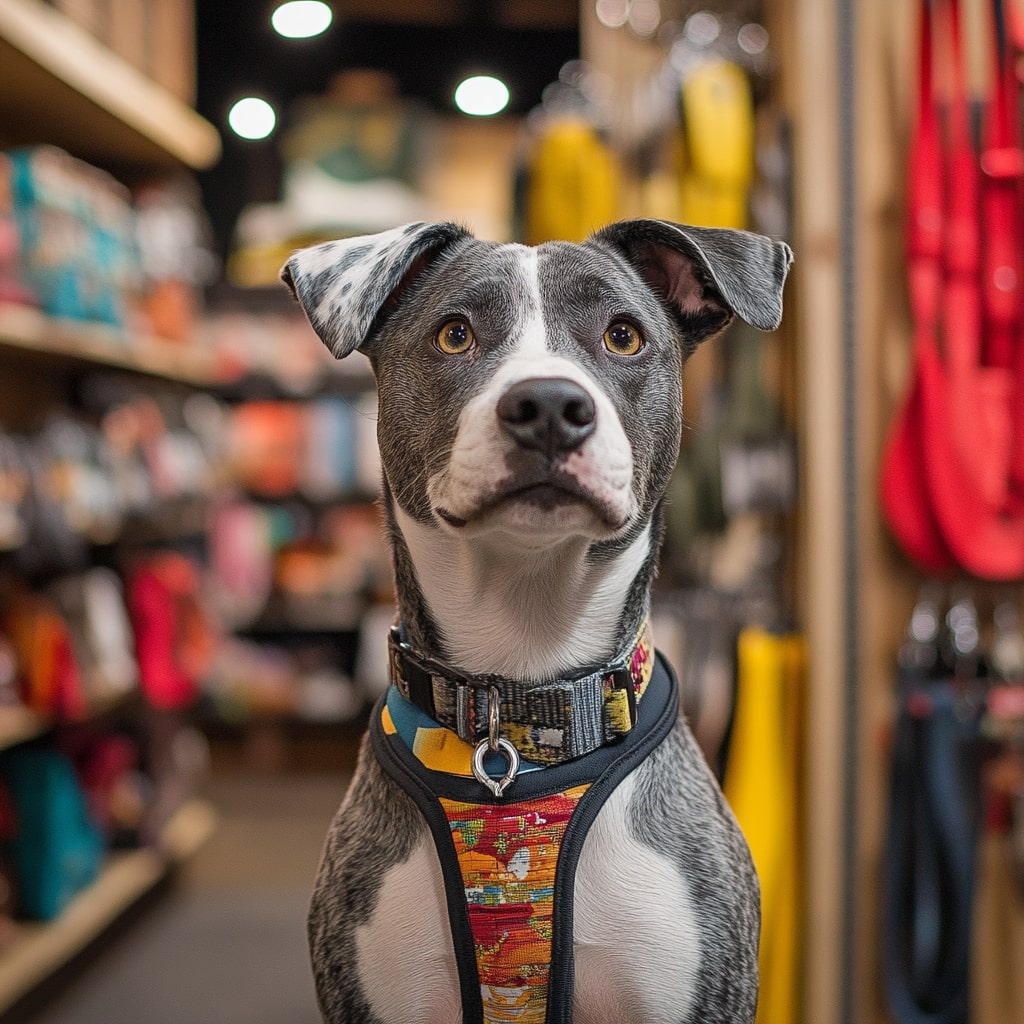
Calm Environment
Starting the training process in a calm and familiar environment can significantly reduce your dog’s anxiety. Once your dog is comfortable and responsive indoors, move to your backyard where there are slightly more distractions. This gradual transition helps your dog adapt to new environments without becoming overwhelmed.
- Minimal Distractions: Begin training in a quiet area of your home where there are minimal distractions. This will help your dog focus on the task at hand. Gradually introduce more stimuli as they become more confident.
- Gradual Introduction to New Environments: Once your dog is comfortable indoors, gradually introduce them to the backyard.
Controlled Walks
When your dog is ready to start walking on the leash, begin with short, controlled walks. This helps build their confidence and ensures they don’t become overwhelmed. After achieving a good level of obedience and comfort in the backyard, take your dog for short walks around the neighborhood.
- Short Distances: Start with very short walks, even just a few minutes at a time. Gradually increase the length of the walks as your dog becomes more comfortable. This step-by-step approach helps prevent anxiety.
- Consistent Routine: Establish a consistent walking routine. Dogs will always thrive on routine, and knowing what to expect can help reduce their anxiety as they go through this gradual leash introduction and training. Regular walks can also help build their confidence over time. Eventually, you can progress to short walks in your neighborhood and eventually introduce them to a park where they may encounter some other dogs in their journey, but make sure to keep watching your dog for any signs of stress as you gradually introduce them to these new environments. Monitor their reactions and adjust accordingly.
Patience and Consistency Throughout the Training Process
Training a nervous dog requires a great deal of patience and consistency. Every dog progresses at their own pace, so it’s important to be patient and not rush the process.
- Regular Practice: Practice leash training regularly, but keep sessions short to prevent overwhelming your dog. Consistent practice helps reinforce positive behavior.
- Celebrate Progress: Celebrate small victories and progress, no matter how minor they may seem. This will keep you motivated and help build your dog’s confidence. Recognizing progress, however small, encourages further improvement.
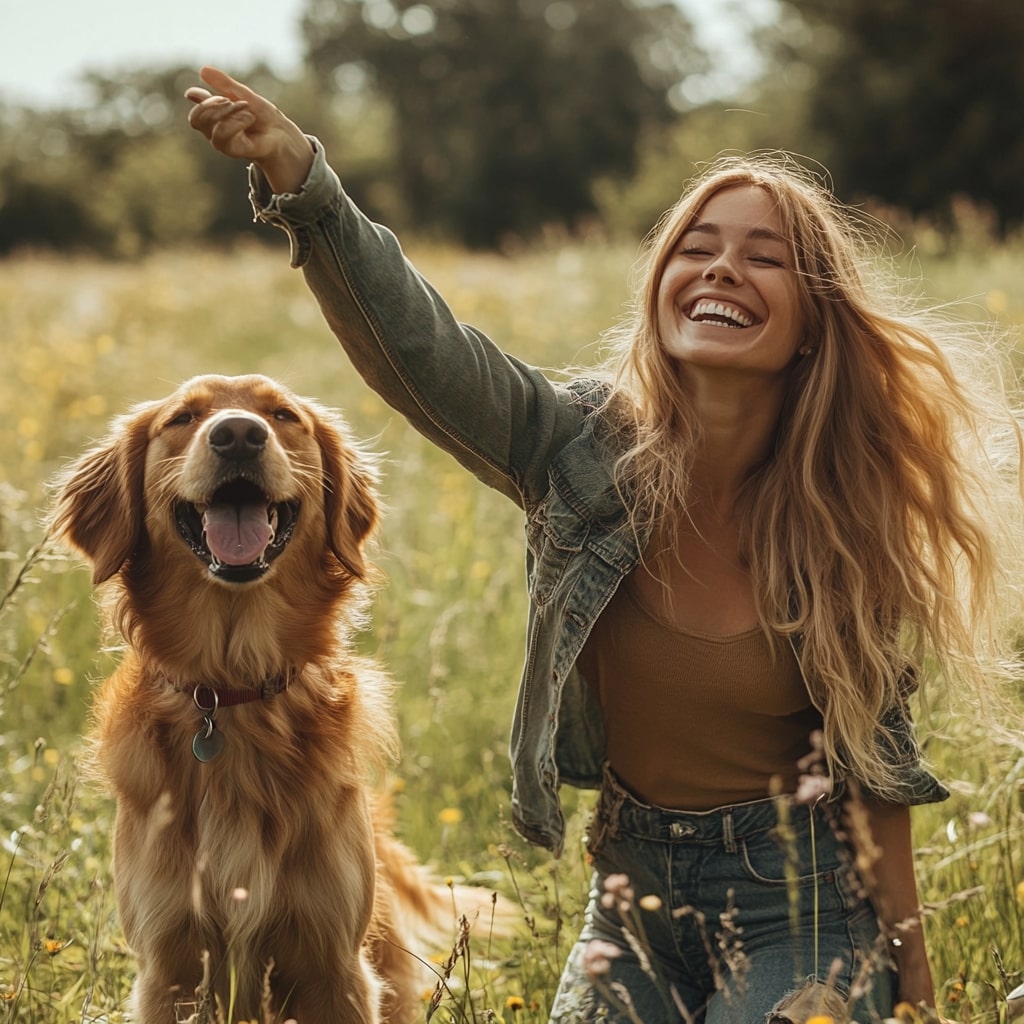
Professional Help
If your dog continues to show significant anxiety or fear despite your best efforts, it may be beneficial to seek professional help.
- Dog Trainers: A professional dog trainer can provide personalized guidance and techniques tailored to your dog’s specific needs. They can offer expert insights and strategies.
- Veterinarian Advice: In some cases, a veterinarian might recommend a behaviorist or even medication to help manage your dog’s anxiety. Professional advice can be crucial for severe cases.
Your Guide to Gradual Leash Introduction for Your Nervous Dog
Introducing a leash to a nervous dog is a gradual process that requires patience, consistency, and a lot of positive reinforcement. By understanding your dog’s anxiety and taking a step-by-step approach, you can help them become more comfortable and confident with leash walking. Remember to celebrate small victories along the way and seek professional help if needed. With time and effort, your nervous dog can learn to enjoy their walks and the new experiences that come with them.

At Performance K9 Training and Boarding, we believe most behavioral issues can be resolved with a solid foundation of obedience training. Our founder, David Greene, has crafted a comprehensive 2-week board and train program called the Basic Behavior Modification Program that addresses common dog challenges such as walking politely on a leash, recall, and the “go to your place” command, all under partial distraction and partial off-leash conditions. This program is ideal for helping nervous dogs gradually become comfortable with leash training, ensuring they learn to walk calmly and confidently. With precise training techniques, dogs learn new skills quickly and effectively. Pet parents receive regular updates and ten follow-up lessons to maintain their dog’s training. Book a free consultation to discuss your needs and get started on the path to a happier, more confident dog today!



